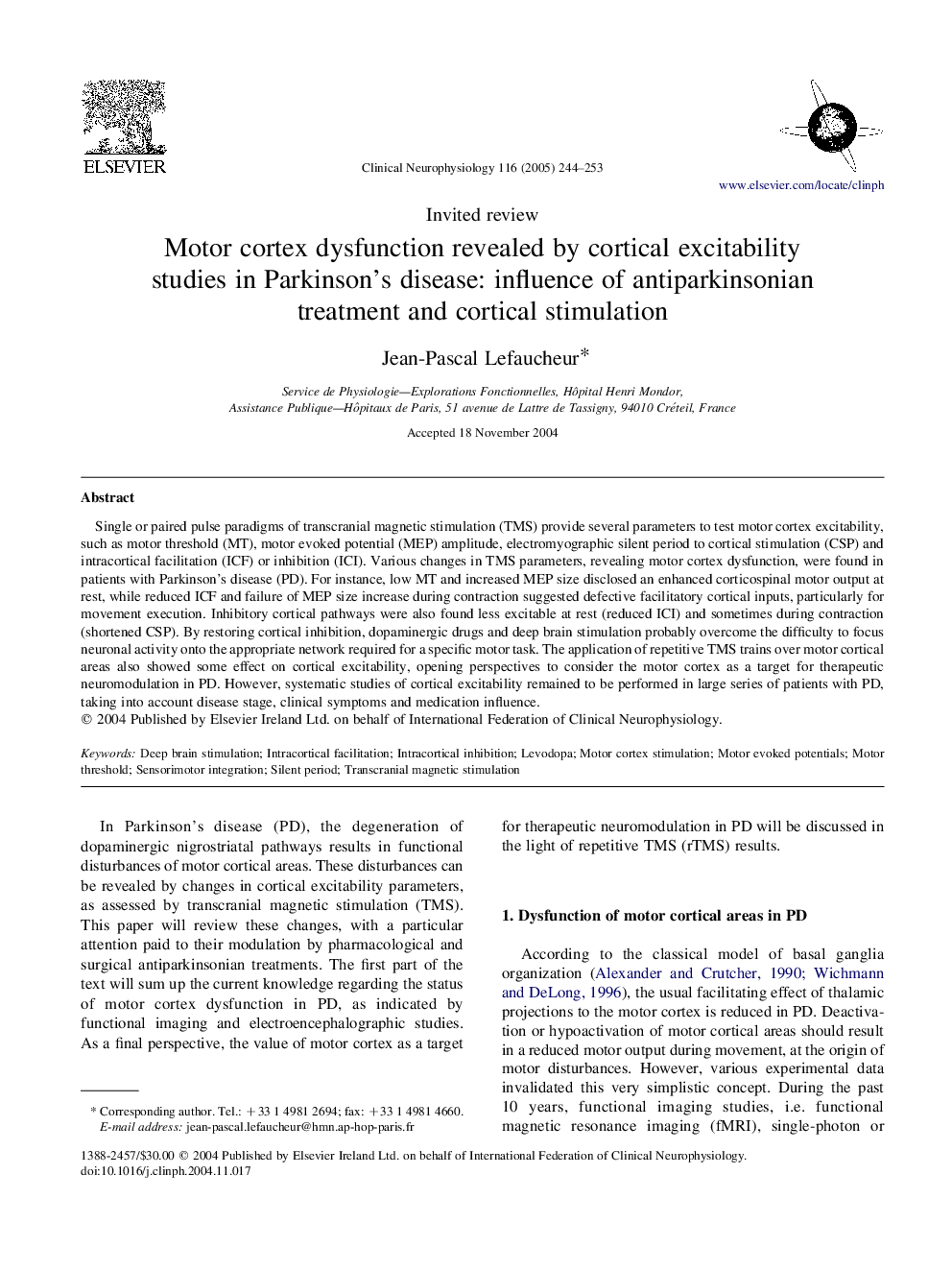| Article ID | Journal | Published Year | Pages | File Type |
|---|---|---|---|---|
| 9188722 | Clinical Neurophysiology | 2005 | 10 Pages |
Abstract
Single or paired pulse paradigms of transcranial magnetic stimulation (TMS) provide several parameters to test motor cortex excitability, such as motor threshold (MT), motor evoked potential (MEP) amplitude, electromyographic silent period to cortical stimulation (CSP) and intracortical facilitation (ICF) or inhibition (ICI). Various changes in TMS parameters, revealing motor cortex dysfunction, were found in patients with Parkinson's disease (PD). For instance, low MT and increased MEP size disclosed an enhanced corticospinal motor output at rest, while reduced ICF and failure of MEP size increase during contraction suggested defective facilitatory cortical inputs, particularly for movement execution. Inhibitory cortical pathways were also found less excitable at rest (reduced ICI) and sometimes during contraction (shortened CSP). By restoring cortical inhibition, dopaminergic drugs and deep brain stimulation probably overcome the difficulty to focus neuronal activity onto the appropriate network required for a specific motor task. The application of repetitive TMS trains over motor cortical areas also showed some effect on cortical excitability, opening perspectives to consider the motor cortex as a target for therapeutic neuromodulation in PD. However, systematic studies of cortical excitability remained to be performed in large series of patients with PD, taking into account disease stage, clinical symptoms and medication influence.
Keywords
Related Topics
Life Sciences
Neuroscience
Neurology
Authors
Jean-Pascal Lefaucheur,
